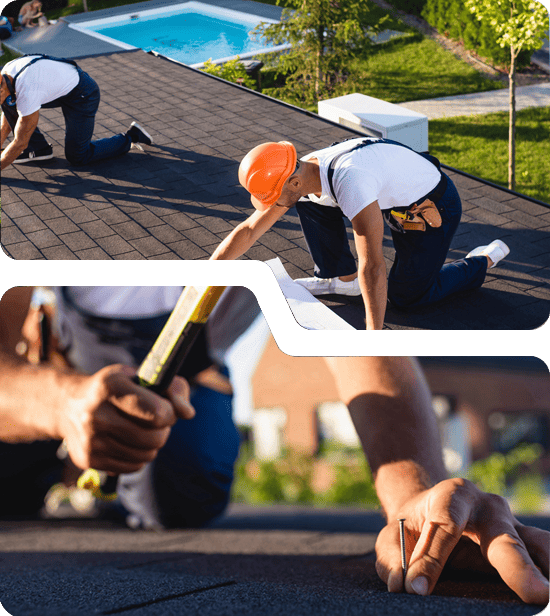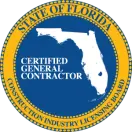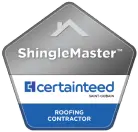Roofs are one of the most important components of a structure, providing protection from inclement weather and other external elements. Proper maintenance of roofs is essential in order to ensure their durability and longevity.
This article will explore the various types of residential and commercial roofing materials available, as well as provide information on proper maintenance techniques for each type. The roofing industry has evolved over time; numerous solutions exist for both residential and commercial buildings. Depending upon the architecture or desired aesthetic, there are many options that can be utilized to create an aesthetically pleasing and functional roof system.
It is crucial to understand how these different materials need to be maintained properly in order to maximize their lifespan and prevent deterioration due to environmental factors such as rain, snow, wind, heat or cold temperatures. By understanding the differences between common roofing material types and gaining knowledge about proper maintenance practices, readers will gain valuable insights into keeping their roofs in optimal condition.
Asphalt Shingles
Asphalt shingles are a popular choice for residential and commercial roofs in many parts of the world. They offer durability, ease of installation, cost-effectiveness and aesthetic appeal.
As with any roofing material, proper maintenance is necessary to ensure its longevity and performance over time. For asphalt shingle roofs, routine inspections should be conducted twice per year as part of preventative maintenance—once prior to winter weather conditions and again after spring or summer storms have passed.
During these inspections, it’s important to look for signs of wear such as missing or damaged shingles that may require repair or replacement. If damage has occurred, licensed professionals should be consulted to assess the extent of the damage and determine whether repairs will suffice or if a complete re-shingling is needed.
When installing new shingles on an existing roof structure, special attention must be paid to properly align rows and overlap each row by at least three inches for effective sealing against water infiltration. Sufficient ventilation should also be installed along eaves and ridge lines to prevent moisture buildup between layers of shingles.
Maintaining an asphalt shingle roof requires vigilance but can help protect a home from costly damages caused by incorrect installation or lack of regular inspection and repair. With periodic care and professional consultation when necessary, a quality asphalt shingle roof can provide reliable protection for many years to come.

Clay Tiles
Clay tiles are a popular roofing material choice among homeowners and commercial developers alike due to their many advantages.
Clay tile roofs offer excellent fire protection, as they do not ignite easily and resist heat transfer much better than other materials.
The tiles themselves are extremely durable, lasting upwards of 50 years if installed correctly.
In addition, the installation process for clay tiles is relatively straightforward compared to other types of roofing materials, requiring fewer tools and personnel than some alternatives.
Clay tile provides a unique aesthetic that adds character to any residential or commercial building.
Its natural colors range from light tan to deep reds, giving homeowners and business owners multiple options when choosing their preferred look.
Furthermore, because clay tile offers superior water resistance its lifespan tends to be longer overall in comparison with other materials such as asphalt shingle.
All these factors make it an attractive option for those seeking a long-lasting solution for their roof needs.
Metal Roofs
Metal roofs are a popular choice for residential and commercial buildings due to their longevity, strength and fire resistance.
However, metal roofing systems require special attention in order to maintain them properly.
One of the most common issues with metal roofs is galvanic corrosion which occurs when two dissimilar metals come into direct contact with each other in the presence of an electrolyte like water or acid rain.
To prevent this from happening, it is important to ensure that all metal components used on the roof should be made out of similar materials and/or treated with sacrificial coatings such as zinc-coated steel or aluminum panels.
Additionally, proper ventilation should also be maintained as inadequate airflow can cause excessive moisture to accumulate under the metal sheets leading to rust damage over time.
Regular inspections will help identify any potential problems early so they can be addressed before more serious damage occurs.
Wood Shingles
Wood shingles are a popular roofing material choice for both residential and commercial buildings due to their relative affordability, aesthetic appeal, and durability ratings.
In addition to the initial installation cost savings that wood shingle roofs offer, homeowners can further decrease costs with regular maintenance and preventative weatherproofing techniques such as caulking around flashing or checking for loose nails in areas of potential water infiltration.
To ensure longevity and reliability of a wooden shingle roof system, it is recommended that inspections be performed by a qualified professional every three years at minimum.
During these inspections, professionals will examine the fasteners used to secure the shingles to the decking along with any trim elements associated with the roof assembly.
They also check for signs of animal invasion or decay as well as inspect all seams between layers. In this way, timely repairs can be made before more costly damage has been done.
These routine checks help maintain long-term performance and structural stability while keeping repair bills manageable over time.
Regular maintenance keeps small problems from becoming catastrophic events down the line; thus ensuring your wooden shingle roof continues to protect your property for many years ahead.
Built-Up Roofs
Built-up roofs are a popular roofing option for residential and commercial properties due to their ability to provide reliable waterproof protection. They consist of multiple layers of felt that have been laminated together with hot asphalt or bitumen, then topped off with aggregate materials like gravel or crushed stone. The result is an impermeable layer that can withstand the elements and protect whatever lies beneath it.
The re-roofing process for built-up roofs involves removing the existing system down to the decking, installing new water proofing systems including underlayment and flashing, as well as laying down additional layers of felt before finishing up with more aggregate material on top.
This type of roof should be monitored regularly in order to detect any issues early on so they can be addressed quickly and effectively before causing too much damage.
Single-Ply Membrane Roofs
Single-ply Membrane Roofs are a popular choice among residential and commercial properties due to their cost effectiveness, ease of installation, and long lifespan.
Single-ply membranes come in two different varieties; thermoplastic polyolefin (TPO) or ethylene propylene diene terpolymer (EPDM). Though both TPO and EPDM have benefits in terms of weather resistance, flexibility, and UV protection, the main difference between them is that TPO tends to be more heat reflective while EPDM is better for resisting chemical exposure.
For either variety, correct installation by a professional roofing contractor is essential in order to ensure proper performance over time.
As with any roof system it is important to perform regular inspections to identify potential issues before they become major problems. This can include looking out for wear on seams or membrane cracking caused by temperature changes.
In addition to visual inspection from the ground it is also recommended that roofs should be inspected from above at least once annually.
Any repairs necessary should then be made as soon as possible in order for the roof system to continue performing optimally throughout its entire life expectancy.

Green Roofs
Green roofs, also known as eco-roofs or living roofs, are increasingly being adopted for residential and commercial buildings in order to reduce environmental impacts.
These roof systems involve the installation of a waterproofing membrane that is then covered with vegetation, soil media and other materials such as gravel which act together to protect the building from extreme weather conditions while providing insulation against heat and cold.
Green roofs provide several advantages including improved air quality, cooler temperatures during hot days, reduced noise pollution and rainwater harvesting capabilities.
Moreover, green roofs can be made using eco friendly materials such as recycled plastics and rubberized asphalt membranes which allow for sustainable design solutions that minimize energy consumption.
Furthermore, utilizing locally sourced plants helps to conserve water by reducing irrigation requirements and provides additional benefits such as habitat creation for wildlife species.
As a result of these numerous advantages, green roofs have become popular amongst architects looking to incorporate sustainability into their designs.
In addition to the many ecological benefits they offer, green roofs also increase property value due to aesthetic appeal.
Conclusion
The maintenance of roofs is essential in order to prevent costly repairs or replacements. Different types of residential and commercial roofs require different forms of maintenance, depending on their materials and components.
Asphalt shingles, clay tiles, metal roofs, wood shingles, built-up roofs, single-ply membrane roofs and green roofs each have unique requirements for proper upkeep.
Regularly cleaning debris from the surface, repairing any damaged areas promptly, checking for signs of wear and tear such as cracks or gaps in seams are all important steps that should be taken when caring for various roof types.
In addition to these preventive measures, periodic professional inspections by a qualified contractor can help ensure that your roof remains safe and dependable throughout its lifespan.
Proper maintenance will not only extend the life of your roof but also provide peace of mind knowing it’s providing reliable protection against the elements.














